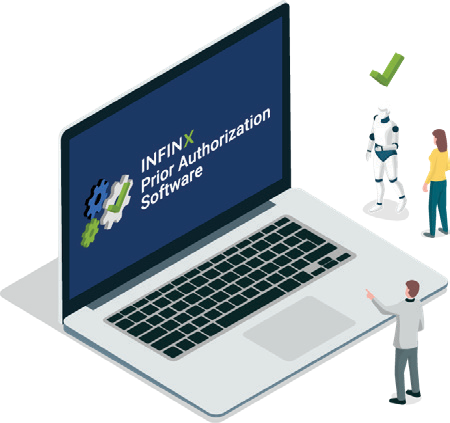White Paper
Automated Patient Access Solutions that Improve the Orthopedics Bottom Line
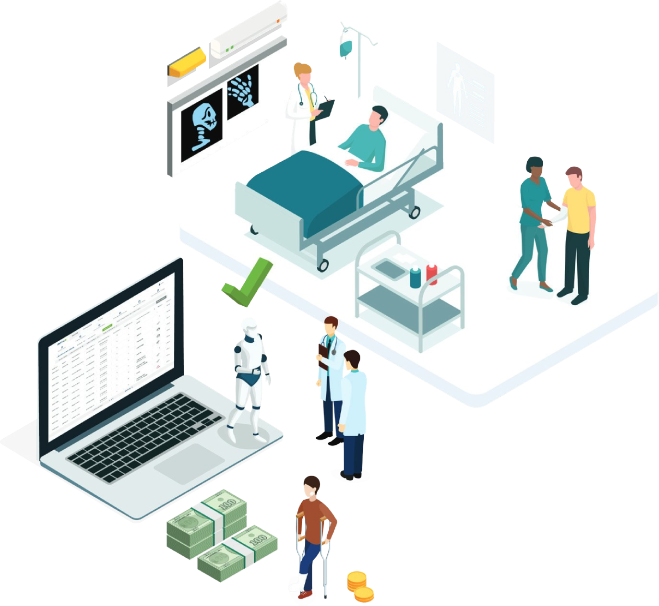
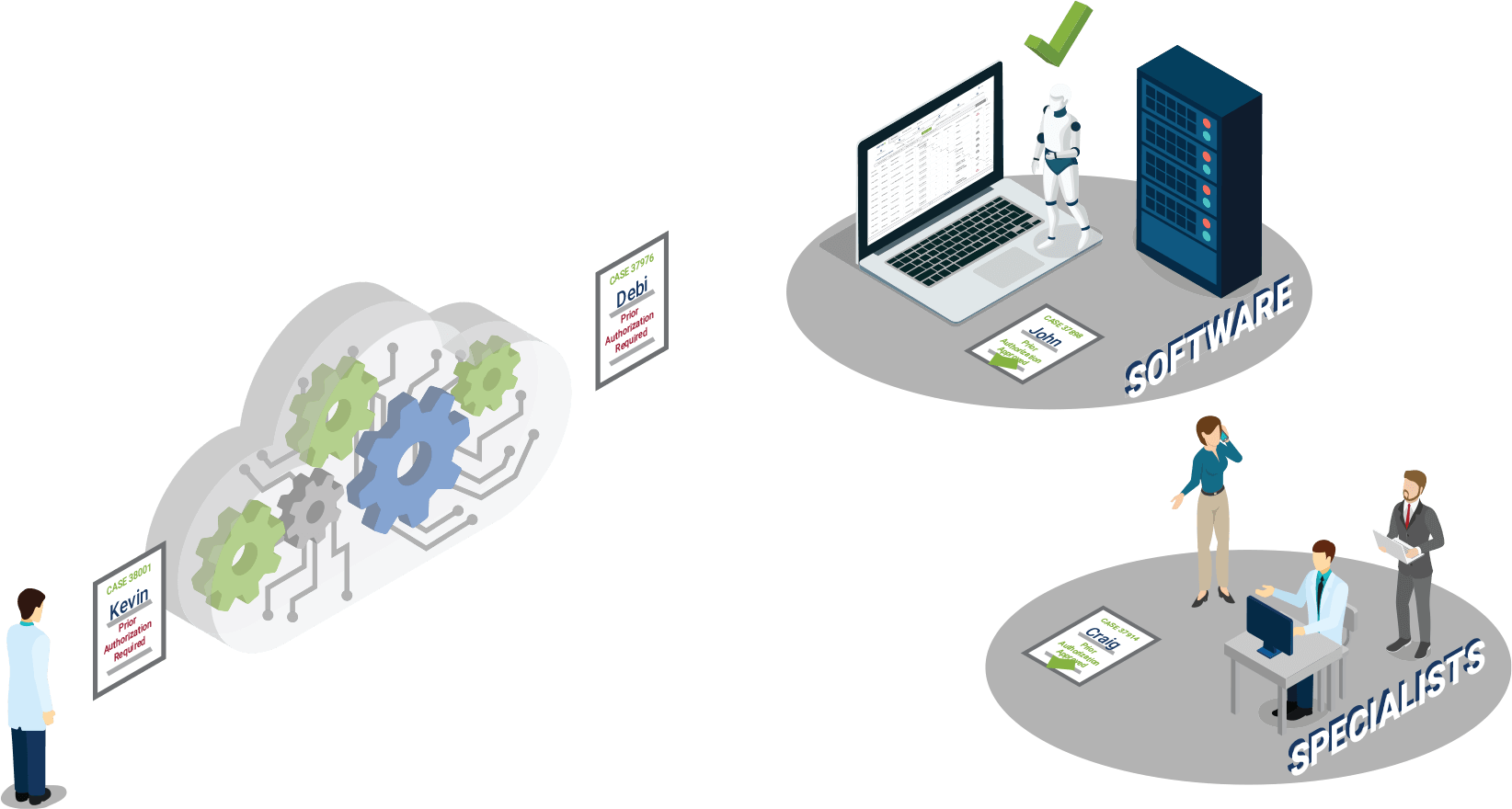
Executive Summary
Our examination of the patient onboarding process in orthopedics, from verifying insurance details to prior authorizations (PAs) to addressing CDSM implementation, provides substantiated improvement solutions that streamline the overall workflow, improve reimbursement, and strengthen the bottom-line. By identifying challenges that orthopedic practices often encounter and outlining automated and fully integrated solutions, including artificial intelligence (AI) driven and machine learning capabilities where appropriate, we create an onboarding flow that improves revenue while enhancing the patient’s experience.
Recognizing the current challenges, the Centers for Medicare and Medicaid Services (CMS) extended the mandatory CDSM implementation date to January 1, 2022. This extension is intended to give both ordering and furnishing providers ample time to negotiate the technological and workflow challenges before there is a monetary impact.
The Business Paradigm is Shifting in Healthcare
As the growing trend of patient consumerism continues to alter the care atmosphere, orthopedic groups around the country are striving to maximize the patient experience through their clinical successes and their approach to the healthcare payment lifecycle. This paradigm shift is requiring providers to reorient their patient access focus to more fully support the patient. Increasing the quality of time spent on educating the patient, estimating amounts potentially due more fully, and reducing surprise billings are some ways that orthopedic practices are developing stronger partnerships with patients.
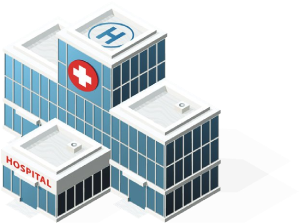
A major shift is in healthcare insurance coverage policy, High Deductible Health Plans (HDHP) are not only here to stay. Still, they are increasing in popularity with each successive “open enrollment period” as employees look to reduce their monthly premium costs. HDHPs with annual deductibles of $6K or more per person sound inconsequential when people are examining their options during open enrollment. Still, often families don’t have accrued savings sufficient to meet the limits when catastrophe strikes.
Defining Patient Access in Today’s Orthopedic Practice
To define our focus for the purpose of this discussion, let’s look at the initial establishment phase – patient access – where we examine the steps required to ensure maximum reimbursement as a patient is initialized into the orthopedic practice. As the orthopedics reimbursement landscape evolves and profit margins continue to tighten, forecasting and strategies turn towards new technologies and streamlined procedures as the way forward.
Successful initiatives are focusing on the patient encounter, from the initial patient access point through revenue cycle management (RCM), are renewing interest in the efficiencies gained by automating redundant, time-intensive processes. As an example, industry-wide, over 87% of PAs is still generated and submitted manually1 even though they can be processed electronically.
Outlining Patient Access Components in the Orthopedic Practice
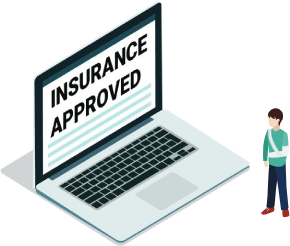
Insurance Verification and Patient Eligibility — Current demographic2 and insurance information must be collected at this initial stage, verified, and used to onboard the patient into the orthopedics reimbursement system to ensure valid billing information is obtained regarding:
- Insurance eligibility dates
- Copays and co-insurance
- Deductibles
- Secondary insurance and coordination of benefits
- In-network vs. out-of-network coverage
- Referral requirements
- Prior authorization requirements
Without this crucial information, revenue reimbursement may be denied through the contracted insurance payers.

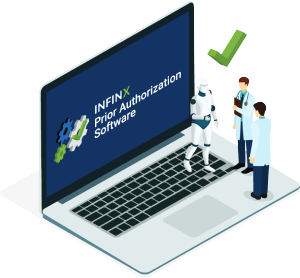
Prior Authorizations — The PA process is, without a doubt, the least respected function in any practice. It is rightfully seen as disruptive to the patient’s care and experience, a roadblock to necessary procedures and equipment (often determined after the patient encounter), and an uncompensated use of physician and staff time3.
A recent AMA Physician Survey4 found that 92% of patients experience a care delay due to requirements for PA. And equally troubling, a significant number of patients abandon care altogether, negatively affecting clinical outcomes.
As stated above, further complicating the PA process is that according to the 2019 CAQH Index on Electronic Business Transactions and Cost Savings, only 13% of providers are using a fully automated electronic process5. This means that an average of 15 hours per provider of staff time per week is used to manually process the required PAs, which is probably significantly more in a surgery-rich specialty like orthopedics6.
Patient Pay Estimates — Today, 35% or more of the total cost of healthcare may be the patient’s responsibility – this includes services an orthopedic practice provides and should be compensated for – and, to be fair, the patient should be aware of this amount before committing to potential care. While there are always unforeseen circumstances that arise, a large percentage of costs can be researched and pinpointed ahead of the initial visit.
It has long been customary for many practices to notify patients of pending amounts due as they arrive, which is often a shock to the
individual and sets up an adversarial relationship from the start. But what if a more proactive approach is used where the patients are notified about payments ahead of an appointment and payment is discussed and arranged at that time?
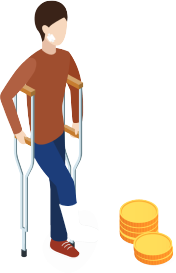
This allows the patient to digest the amount, ask questions, research their insurance plan, and become an active participant in the process. It also encourages staff to identify potential concerns and to offer arrangements that reinforce an obligation, such as 50% now-50% at the time of service or third-party financial plans.
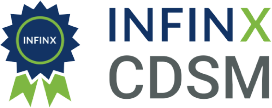
Clinical Decision Support Mechanisms — Appropriate Use Criteria (AUC) and CDSM have entered the education and operation testing period lasting until the end of 2021. For orthopedic providers, whether ordering advanced imaging services or performing the tests themselves, this will require changes to the diagnostic process (to include consulting AUC) and forwarding certificates of adherence to radiology for Medicare eligible patients as the ordering provider, or generating and acknowledging the
certificates as the rendering provider. While inpatients and certain emergency patients are excluded from this change, all other Medicare patients fall into the CDSM category whether in a hospital setting, group practice setting or imaging center.
The unique structure of the CMS-defined process presents challenges for the providers who actually perform the tests since they are financially responsible to code claims based on having received the CDSM certificates from their ordering orthopedic provider. However, they are relying on the ordering provider to consult the AUC and then generate and forward the actual certificates themselves via their software through CMS-approved vendors.7 Orthopedic groups that perform these imaging tests in house find themselves in the somewhat unique position of possibly being both the ordering and rendering provider.
Leveraging Automation, Artificial Intelligence, and Machine Learning
With what’s available today, it’s important to define the three types of technology and outline how each could benefit the process of patient access flow. Using HL7 or API-based integration that guarantees 100% HIPAA compliance, functions are completed in real-time, followed up as necessary, and status automatically reported at completion.

Automation – eases the redundant human burdens and mimics the actions of the workforce. Automation is used to determine insurance eligibility, PA, and patient responsibility for pre-collections.

Analytics – digital data collection is designed to enhance productivity through analyzing patterns, trends, and statistical information. Data analytics is used to quantify outcomes based on performance and developing predictive scenarios to enhance RCM results.

Artificial Intelligence – by identifying patterns through computational analyses, AI can make predictions that support and amplify those made by humans alone. For patient access, this means predicting risk and behavior and potential forecasting outcomes for RCM purposes.
Best Automated Practices for Patient Access
The efficiencies recognized, and benefits enjoyed by automating each function within patient access during the onboarding process include increasing revenue captured, savings or redirection of front and back-office professionals’ time, reduction in denied claims and follow-up, and a vast improvement to the patient experience.

Insurance Verification and Patient Eligibility
Accurate and immediate verification of a patient’s eligibility is paramount in kicking off the entire reimbursement process. As the basis for any sound RCM system, the patient insurance information should be gathered thoroughly with copies of insurance cards and ID’s becoming part of the patient’s permanent records and double-checked at each visit.
Today’s automated processes allow the insurance to be verified before the patient’s visit and, again, when the patient arrives to ensure that no changes in eligibility have occurred and an up-to-date remaining deductible amount is obtained. Additionally, insurance verification and eligibility through an automated software solution greatly reduces the administrative burden of manual verifications, and can be integrated with PA and patient pay functions.

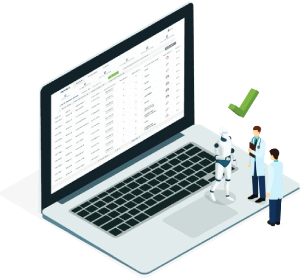
Prior Authorizations
By intuitive and seamless processing of PAs in real-time with full transparency, AI-driven technology allows requests to be submitted to the appropriate payer, monitored, and followed-up intuitively, with alerts and notifications updated continuously.
To proactively address the multi-layered issues surrounding PA, it’s helpful to identify the challenges currently being experienced in the overall PA process. By automating the PA process, significant time is saved by eliminating manual, burdensome workflow. Once isolated, then rethinking operational flow and zeroing in on a solution becomes more effective.
With a deliberate and strategic approach, you can improve patient access and see benefits in the healthcare billing
lifecycle workflow, including:
- PA’s processed in real-time
- Clarity in patient appointment scheduling
- Lower denial rates
- Increased revenue
- Improvements to AR and days outstanding
Obtaining PAs continues to be an ongoing struggle for most orthopedics groups today. The process is labor-intensive and time-consuming, often requiring many hours of constant follow-up by business staff that takes time away from patient care.
With improvements in today’s technologies, bold new AI-driven software options are being implemented in orthopedic groups around the country that are capable of processing PAs in real time, eliminating inefficiencies in obtaining care and capturing revenue previously forfeited.
Clinical Decision Support Mechanism
Looking through the practice lens of orthopedics, the AUC program and CDSM were conceived as a process that would complement and elevate the referring provider’s diagnostic practice, strengthen the Medicare patient experience, and reduce unnecessary advanced image testing. The requirement impacts all physicians, APP, and facilities that are billing Part B Services to Medicare8. Note that exclusions are being made for emergency patient encounters, inpatient services billed through Part A, and ordering professionals with significant hardship, such as rural proximity to services.
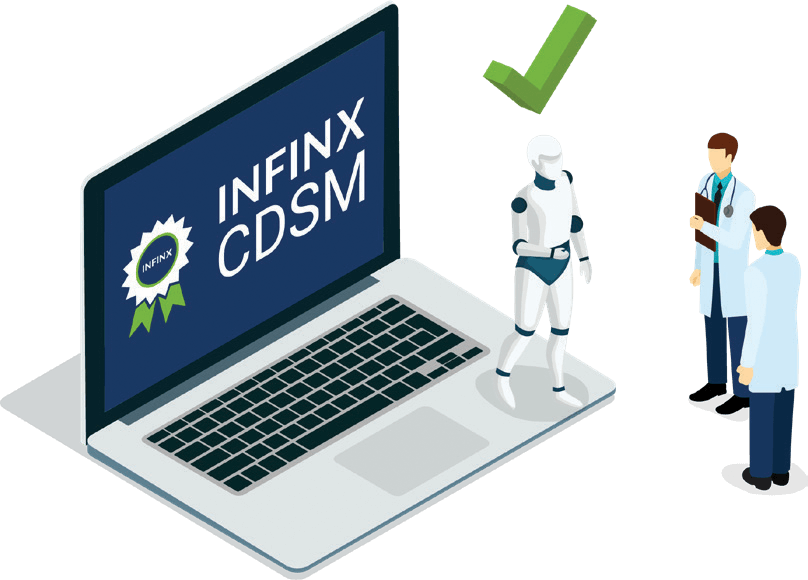
When reviewing and evaluating a comprehensive CDSM solution from the CMS published list of approved vendors, consider a partner that offers these valuable components:
- A comprehensive and up-to-date library of AUC’s sourced from multiple qualified Provider Lead Entities (qPLE’s)
- A bi-directional, integrated clinical dashboard that provides immediate access to current patient information for both furnishing and ordering physicians
- Coverage of all priority clinical areas as detailed by the CMS, including hip pain, low back pain, shoulder pain (to include suspected rotator cuff injury)
- Ability to support referring providers within their EHR/EMR systems
- Ability to generate compliance certificates required for reimbursement
- A qPLE that meets all security requirements and HIPAA compliance standards
CMS has extended the mandatory CDSM implementation date to January 1, 2022. This extension is intended to give both ordering and furnishing providers ample time to negotiate the technological and workflow challenges before the full monetary impact.

Patient Pay Estimates
Once your admissions professionals have secured a valid PA and verified eligibility, an automated patient portion estimate becomes available, and patients can be informed of their financial obligation. At this point, the onboarding staff can proceed to collect the amount estimated to be due according to your well-defined financial policies, i.e., collection, payment plan, financing, etc.
Summary and Conclusions
While many in orthopedics feel they already have effective and extensive experience in onboarding patients, today’s technology offers improved and streamlined opportunities to assimilate patients efficiently. These automated solutions not only improve the patient’s experience during pre-registration, but significantly impact RCM in a positive and worthwhile way to produce the end result—an improved bottom-line.
Today, a healthy and robust orthopedics group relies on state-of-the-art operational processes to ensure maximum revenue reimbursement. With the ongoing changes in the healthcare industry, being up to speed on technological advances allows a practice to meet revenue challenges head-on as well as allowing providers and staff the opportunity to commit to higher-level functions that genuinely improve the patient care continuum.
Contact us today to discuss the best orthopedic practice solutions for patient access technology.
Thanks for reading. If you’d like to see the footnotes, please download this white paper as a pdf here.
About Infinx
Infinx provides innovative and scalable payment lifecycle solutions for healthcare practices. Combining an intelligent, cloud-based platform driven by artificial intelligence and automation, with our trained and certified prior authorization, coding and billing specialists, we help clients realize revenue, enabling them to shift focus from administrative details to billable patient care.
